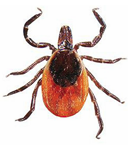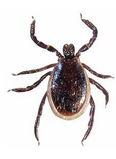 Ticks are a clear and present danger.
Ticks are a clear and present danger.
Please protect my buddies from ticks.
Pets that go outside are at risk of tick attack…monitor your pet for tick attacks.
Ticks: A Survival Guide to Protect your Pets from Pests
With autumn here, we are looking forward to the cooler weather and spending more time with our furry companions outdoors. From playing in the backyard leaves to taking long walks on the beach, hiking or camping, it is important to keep an eye out for pesky ticks on your pup. There are 5 common places ticks like to hide on pets, here’s how to find them and protect your four-legged friends.
Protect your Pets
Signs and symptoms of a tick
The signs and symptoms of a tick might not be as pronounced as other ailments. For example “, Often other than seeing the tick on your pet, there are no other symptoms. The area around where the tick is attached may become red,” states on-site Trupanion veterinarian, Dr. Sarah Nold.
How to detect ticks on pets
It is important you know how to detect ticks on pets. “Ideally, you should check your pet every day for ticks during tick season. When you are checking your pet for ticks, you should cover every part of the body and feel for small bumps, which can be more difficult in cats or long-haired dogs, “says Dr. Nold.
5 common places ticks hide on pets
Ticks can be anywhere on the body, but there are 5 common places ticks tend to hide. “The most common area to find ticks are on the head, such as around the ears. Similarly, other common areas to find ticks are on the neck and legs (such as in-between the toes and armpits). Also, another good hiding spot is around the tail,” states Dr. Nold.
How to safely remove a tick
Once a tick has been spotted, it will need to be removed, carefully. “The best way to remove a tick is with a tick removal device or tweezers. Now with the tweezers use slow and steady pressure to pull off the tick. Be careful not to crush the tick. Also, if you prefer, your veterinarian would be happy to remove the tick and check your pet over for other ticks,” says Dr. Nold.
Popular geographic regions for ticks
Certain regions might be more prone to ticks. “For example, the ticks that carry Lyme Disease are found in the midwest, northeast, southeast, south-central and west coast. Likewise, tick ranges are expanding, which means you might see ticks in areas they weren’t previously common,” states Dr. Nold. Keep this in mind when traveling, stay alert to where your pet is walking or sitting, especially when you are outdoors.
Illness and disease from ticks
The concern for many is the possibility of an illness or disease from an infected bite. “Because, certain disease are only carried by specific species of ticks this (non-comprehensive) list includes: Lyme Disease, Rocky Mountain Spotted Fever, Canine Monocytic Ehrlichiosis, Canine Babesiosis, and Tick Paralysis. Also, small pets are at a greater risk for Anemia. Rarely, ticks can consume enough blood from your pet to cause anemia, “states Dr. Nold.
Safeguard for tick season
Your veterinarian is a wonderful resource in regards to combating the tick season. Additionally, “The many effective tick preventions on the market include chewables, spot-ons, and collars. Although, you may not want to go with a chewable, unless your pet is picky about what they eat. There are epidermal anti-tick medications which can be applied externally.”

The best way to deal for tick season is being aware and diligent. Paying attention to your surroundings, knowing how and where to look on your pet and checking regularly. Additionally, knowing how to remove ticks and the signs and symptoms if your pet should get bit. Above all, if any questions arise, please seek veterinary care in regards to your pet’s health. When you are outdoors, whether it’s hiking, camping or exploring, have a wonderful time with your furry friend!








